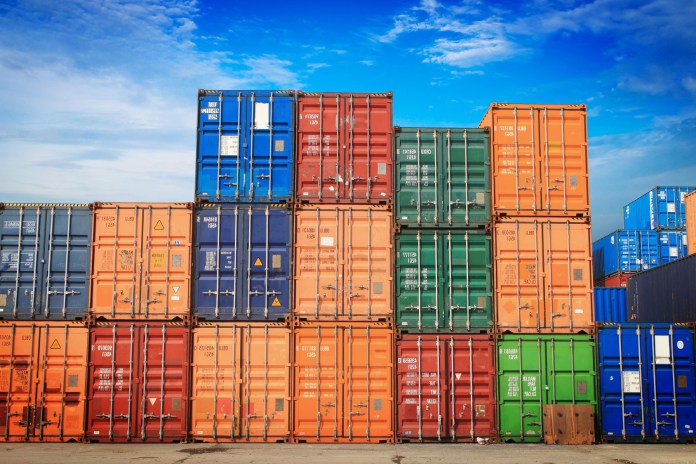Container size standards
Containers have many types, and specific sizes according to each production unit. However, due to the need of standardization to be used globally, the size and symbols written on the container are often applied according to a common ISO standard. There are many sets of ISO standards related to containers, including ISO 668: 1995 – Regulations on dimensions and loading capacity of containers.
In terms of width, all containers are 2,438mm (8ft) wide.
+ In terms of length, 40 feet container is taken as standard. The shorter containers have a calculated length so that they can be arranged to put under 40 ‘container and still have a 3 inch gap in the middle. For example: 2 20 ‘containers will fit under 1 40’ container with the gap between these 2 20 ‘containers being 3 inches. For this reason, the 20 ” container is only approximately 20 feet long (1.5 inches to be exact).
+ In terms of height, currently mainly using 2 types: normal and high. The container type is typically 8 feet 6 inches tall (8’6 ”), the tall one has a height of 9 feet 6 inches (9’6”). These two containers have a height difference of about 300mm (30cm) or nearly 1 foot (foot).
So how many meters is 1 foot, how many meters is 1 inch?
Foot (also known as feet, symbol “ft” or ‘single comma’) is a popular unit of measure in the world, with the prominence of the British American region.
Accordingly, 1 foot is about 30.48 cm. For ease of memorization, you can think of Vietnamese foot as feet, and 1 foot would be about 1 large foreigner’s feet long.
The inch is also a popular international unit of measure, abbreviated as “in”, or the ‘double comma’ symbol. So how long is 1 inch? Exactly 1 inch is 2.54 cm, the size of an adult arm. Note that 1 foot = 12 inches.

According to ISO 668: 1995, standard 20 ‘and 40’ container sizes and weights are usually and high as shown below:
Container Size | Container 20′ (20’DC) | Container 40′ normal (40’DC) | Container 40′ high (40’HC) | ||||
British | metric | British | metric | British | metric | ||
Outside | Length | 19′ 10,5″ | 6,058 m | 40′ | 12,192 m | 40′ | 12,192 m |
Width | 8′ | 2,438 m | 8′ | 2,438 m | 8′ | 2,438 m | |
High | 8’6″ | 2,591 m | 8’6″ | 2,591 m | 9’6″ | 2,896 m | |
Inside (min) | Length | 5,867 m | 11,998 m | 11,998 m | |||
Width | 2,330 m | 2,330 m | 2,330 m | ||||
High | 2,350 m | 2,350 m | 2,655 m | ||||
Gross weight (cargo & case) | 52,900 lbs | 24,000 kgs | 67,200 lbs | 30,480 kgs | 67,200 lbs | 30,480 kgs | |

This standard may also have legal restrictions on the height and tonnage of containers in certain countries. A container load is a technically designed load that does not mean you are allowed to ship with that load. The load on the container does not mean the load you are allowed to pack.
For example, in Vietnam, the standard applied by the Vietnam Register is TCVN 6273: 2003 – “Regulation on the manufacture and certification of shipping containers by sea”, which regulates the overall payload. for a 20 ‘container, the maximum is 20.32 tons (less than the international standard mentioned above) .Note that a 40-feet container, although double 20 feet, does not mean that a 40-feet container can carry twice the cargo of the container 20 feet.



